Dearest Kula Diaries friends,
It’s been awhile since I’ve answered some ‘Ask Me Anything’ questions, so I thought it would be fun to share some answers with you this week — PLUS a reminder that The Trail Register is still open (scroll to the bottom for my info), and I’m hoping to re-launch The Trail Register in a few weeks. This is YOUR chance to share a story, idea, art… (or anything else) with our community… plus, I’ll send you a gift as a thank you if your submission is included!
I’ve received some fun questions in the Kula Diaries Vault, and I’m really looking forward to digging into them here… so, here we go!
Dear AMA,
I’m wondering about your spiritual beliefs and background/childhood, have you experimented with cannabis/mushrooms/ayahuasca etc?
I was raised in a very traditional Catholic family, and I grew up attending Catholic School and Catholic church. My dad’s side of the family is Italian Catholic, and my mom’s family was Irish Catholic. As I child, my belief in God was akin to a ‘Santa Claus’ type figure who lived in the sky and was judging me at all times. My guilt and shame around doing things ‘wrong’ or ‘bad’ was tangible on a regular basis. At church, I would go through the motions, but I can’t say that I had any understanding of what I was doing. In my mind, there was an omnipotent man with a grey beard who lived on a cloud, and someday, when I died, he would determine whether or not I was ‘good enough’ to be allowed into a mythical spot called heaven — a place that I believed was some cotton candy version of life, way up in the sky. My attendance at church was somewhat robotic — I did all the things… stand… sit… kneel… pray, but I can’t say that I grasped any type of deeper understanding other than, ‘these are the things that I have to do in order to get into heaven.’
As I got older, I started playing my violin at church, and while I didn’t find much meaning in the ceremony of the mass itself, I did find meaning in sharing my music with people. In those moments of playing my violin for others, I would often describe that I, ‘felt something’, although I didn’t really understand it.
There were some moments during my Catholicism where I did feel a connection to something I couldn’t articulate. In particular, there was one priest at my church in Pennsylvania — Father Morabito — who would give these sermons that were sometimes only a sentence long. He’d say something about love or kindness or connection, and it felt like he was talking directly to my heart. I remember that when he talked, I often felt an overwhelming sense of gratitude or wanting to cry at the profound meaning of his words. In addition to Father Morabito, my great uncle — Father Jim — was also a priest. In a strange coincidence, Father Jim was a priest at St. Edward’s Seminary in Redmond, Washington. St. Edward’s later became a Washington State Park — the agency where I ended up becoming a park ranger. I spent a lot of time at St. Edwards during my years as a ranger, and I always felt a special connection to my uncle. When I knew my uncle, he lived in a retirement home for priests, and I remember being his pen pal and traveling to visit him as a child and listening to him say mass. These moments were deeply special to me, because of the love we shared.
In college, I attended a Catholic Church that was held on Sunday evenings for students — and I volunteered to play my violin at services. Some of the priests who led mass were really incredible at sharing their message. One priest, in particular, had a speech impediment that caused him to stutter when he spoke, but not when he sang — so he would sing the entire mass in this beautifully haunting voice. Again, some of these moments were very special to me, and I always felt a connection when I was playing my violin for others.
After college, I eventually moved to Washington to become a Park Ranger and I began attending a local Catholic Church, where I volunteered to play my violin with their choir. Initially, I loved it, but at some point, a few of the folks in the church found out that I had decided to live with my (then) boyfriend, even though we were not married. One of the members of the choir took me aside to tell me that I was, ‘living in sin’ and that I shouldn’t receive Holy Communion anymore. I was so hurt by this message that I left the church and never went back. Over the years, the members did continue to try and engage me, but I didn’t have any interest in re-joining.
For a very long time, the word ‘God’ made me uncomfortable — I associated it with religious extremists who were trying to push their beliefs on me. In truth, I think that a lot of my discomfort with the word was because I had no idea what it actually meant. I was still clinging to the idea of this Santa Claus man on a cloud, because it felt like God was always something that had been used against me… to get me to behave in a ‘certain’ way, to make other people happy. It felt like God was a weapon, and so most of religion made no sense to me. One one hand, I knew the stories of Jesus, saving the prostitutes from being stoned to death and on the other hand, I couldn’t reconcile this deeply loving image of a spiritual leader with a God, who seemingly had nothing better to do than tell me I couldn’t eat a wafer at a Catholic church in Belfair, Washington. It didn’t make sense.
After my near death experience in 2017, I (unknowingly) embarked upon a spiritual journey. I thought I was embarking upon a journey to start a career in the outdoor industry, but, along the way, I discovered things that were much more important to me — and things that answered my questions about faith and God and love. As I read Eckhart Tolle’s book, the Power of Now for the first time, I started to understand something: all along, I had misunderstood what the word God meant. It wasn’t some guy in the sky, instead, it was just the universal energy of the cosmos that created all things. It’s in everything and it is everything. It encompasses science and the things that can’t be explained. It can go by many names — universe, source, spirit, God… but, most importantly, I think, it can also be called Love. As soon as I began to sense this knowledge, all of the ‘stuff’ that I had tried to make myself believe for so many years seemed to fade away.
Now, as cliche as it sounds, I would call myself a ‘spiritual’ person. I no longer believe that heaven is a place in the clouds with rainbows and unicorns. I believe that much of what Jesus was attempting to tell people was vastly misinterpreted. His message was not to look outside of ourselves for salvation, instead, it was that the Kingdom of Heaven is within us — it’s the love that we feel within our hearts and the love that we have access to when we learn to separate ourselves from the ego-manufactured thoughts of fear that try to run our lives. When we can see ourselves as consciousness — and when we can see the essence of that in all things, we have access to a place that exists without fear or separation. Hell is the opposite of that: it’s a place of constant fear, worry, doubt and lack — a place that many people live in for most of their lives (myself included at times). For me, my spiritual practice is continually coming back to what is real. As A Course in Miracles Says, “Nothing real can be threatened. Nothing unreal exists. Herein lies the peace of God.”
I am not spiritually ‘perfect’ nor am I ‘enlightened’, but, in a strange twist of events, I feel closer to whatever God is, than I ever did when I was a kid. Ultimately, I think that each of us is on our own spiritual journey, which will lead us to different places, but all of those places will ultimately lead us to the singular truth: the love that connects us. The journey is always bringing us back to love, no matter which path you follow.
And finally — I’ve never tried ayahuasca or psychedelic mushrooms of any kind, although I’ve had experiences during meditation that have probably been similar to what folks experience while taking those drugs. I’ve never felt called to experiment with any type of substances, although I do have friends who have tried them and had varying experiences — everything from existential clarity to wishing they had never done it. In college, I took some puffs of horrible quality cannabis (because it was illegal at the time), and I didn’t notice any major effects. As a Law Enforcement Ranger and Railroad Police Officer for many years, I was obviously drug tested and forbidden from any drug usage whatsoever. When I left my job at the railroad, I decided to be a ‘rebel’ — so I went to a dispensary and purchased some cannabis gummies to try. I ate 1/2 of a gummy, and I didn’t like how it made me feel, so that was my last experience with any type of drug.
When I took my polygraph test and psychological testing for my first job as a Park Ranger, the psychiatrist actually told me that the test, ‘dinged me’ for being too straight-laced. He said that when people appeared to have, ‘no bad vices’, it gave the impression that they were lying. I remember laughing at him at the time and thinking to myself, “He doesn’t realize that I was homeschooled. That would probably explain everything.”
Fellow homeschoolers, I stand with you in eternally (mostly) straight-laced solidarity.
Dear AMA,
Who designed the original Kula Cloth logo?
I am very proud to say that I did! In fact, we are still using (mostly) the exact same logo now — nearly 7 years later. I designed it entirely on Canva.
Here’s our current logo:
The font for the logo is called Amatic, and each rectangle was a separate element, that I attached in a line — and then altered the color on each one individually. As I was responding to this question, I went to Canva and searched for ‘rough rectangle’ (which is the shape I had searched for so many years ago), and I was unable to find a duplicate rectangle. So, if I were starting from scratch and making the Kula Logo today, it might look very different!
Since there were not a lot of spots on the Kula Cloth itself to include the logo (other than the strap), I knew that it had to be narrow in its design. I liked the idea of using different colors to portray the different elements (this is similar to the Himalayan Prayer Flags): water, earth, fire, wind, and sky.
Here is one of my prototype Kulas with the original ‘TM’ design on it. When you’ve applied for a trademark, you can use ‘TM’ until your trademark has actually been registered. Once it has been registered with the US Patent and Trade Office, you can begin to use the ‘circle r’ symbol:
I also decided to venture deep into my Canva archives, where I was absolutely delighted to find some of my early attempts at making a logo… STILL IN MY CANVA ACCOUNT!! These are all from 2018, when I was in the process of trying to ‘launch’ Kula Cloth (on my own) and create a logo:
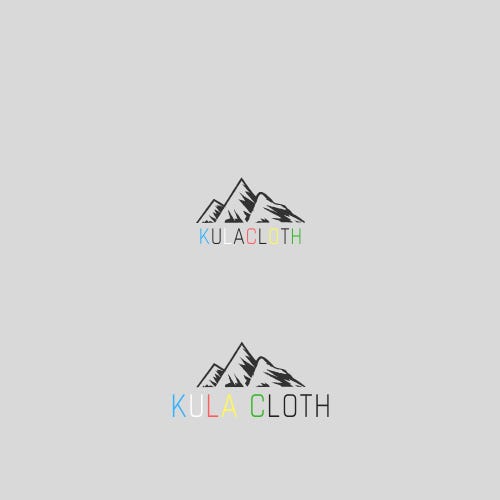
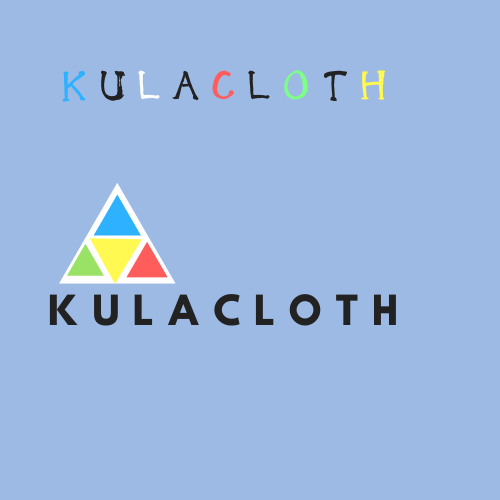


One thing to note: Canva is a great tool, but if you only use Canva to create your logo, you will not be able to trademark the shape/appearance of the logo itself. For instance, if you start a company and you find a piece of clip art from Canva that features a mountain, and then you simply write the name of your company underneath it, you will not be able to trademark the shape/appearance of your logo. You will be able to trademark the name (if it’s available), but not the design itself, since it’s a design that is readily available to other members of the public who also pay to use Canva.
So, Canva is a great place to get started — but once you decide on a logo, it’s worth it to have a designer convert your idea/concept into something that is uniquely yours by changing a few small elements.
Eventually, I had our Creative Director, Amanda, take our original design and convert it into a unique and original Vector file by sprucing it up a bit. We still use the same font, but she re-created the rectangle design in Adobe Illustrator. As a result, my original trademark for Kula Cloth is on the name of the product, not on the logo design.
Here’s another random point: my goal with Kula Cloth has always been to become the ‘Kleenex of Pee Cloths’ … what does this mean? It means that people associate the use of the product with the name, and often don’t even realize they are using a brand name. For instance, Kleenex is a brand… but nobody calls them ‘tissues’. Qtip is a brand… cotton swab is the actual name of the product itself. Buff is a brand… and a ‘neck gaiter’ is the actual name of the product. Over the past few years, I’ve seen people calling any/all pee cloths a, ‘Kula Cloth’, even if it isn’t actually our brand. This is REALLY COOL and exciting, but it also makes my IP Lawyer nervous of something that I had no idea existed: GENERICIDE!!! That sounds like a terrifying and cataclysmic event, but what it means is that the brand name of your product becomes so synonymous with the use of the product… that you actually LOSE YOUR TRADEMARK! Isn’t that wild? It’s an ‘exciting problem’ to have, but also something to be mindful of, which is why I pay somebody else to be mindful of it for me (I don’t have time to worry about things like that - ha!).
For fun, here are a few of the VERY FIRST images I made for Kula Cloth on Canva. It warms my heart to think of me, almost 7 years ago, just dreaming and putting my whole heart into this… with absolutely NO CLUE what I was doing and no proof it would work. Those were such fun and exciting times!
Thanks for taking me on this wonderful stroll down memory lane. It’s so important to remember how far you’ve come. I’m deeply grateful for the folks like Amanda and Allison — my creative director and Event Coordinator respectively — who have helped to make Kula as beautiful as it is today.
Dear AMA,
If the essence of your life was an ingredient list on a microwavable burrito - what would it be?
Ahhhh…a question that I have (seriously) given some major thought to!
For those who haven’t listened to the Desert Skies podcast, this is your sign to LISTEN TO THE DESERT SKIES PODCAST!! This question is a reference to a beautifully humorous part of the imagined astral plane, in which humans who attempt to go back to earth after their death, are turned into microwavable burritos. You can find the podcast here (it’s amazing, you won’t regret it):
If the essence of my life was turned into a burrito it would include the following:
eggs, seasoned with Aromat
bacon
chunks of homemade buttermilk biscuit
creamy sausage gravy
wrapped in a mega, super XL tortilla
drizzled or dipped in a smidge of maple syrup
once the burrito is assembled, it is lightly buttered and placed in a panini maker to become a crunch wrap and so that the maple syrup can soak into the folds of the tortilla
An important note: the closest I have ever come to discovering this ‘real’ burrito is at a restaurant in Missoula, Montana called The Breakfast Club. They have a breakfast burrito called ‘The Athlete’, which I have ordered with sausage gravy, instead of salsa/sour cream. The burrito WITH the sausage gravy inside the burrito is like heaven! One of these days, I’ll have to assemble my soul essence burrito for real, and share observations of what it was like eating my own soul in a burrito.
Dear AMA,
How did you decide on the dimensions for a Kula cloth? And what about mini ones?
The dimensions for the Kula Cloth have actually changed over the past few years. To get the initial size of the product, I honestly just started cutting different sizes of squares, and determining (personally) what felt ‘too small’ or ‘too big’. A four inch square felt too small to be useful for a multi-day trip… and a giant, 8” towel-type Kula felt too large and heavy to be carried on a day hike. Eventually, I narrowed it down to 5.5”-6” being the ‘ideal’ size. This was also based on feedback from my initial group of 30 testers, who were instrumental in creating the product.
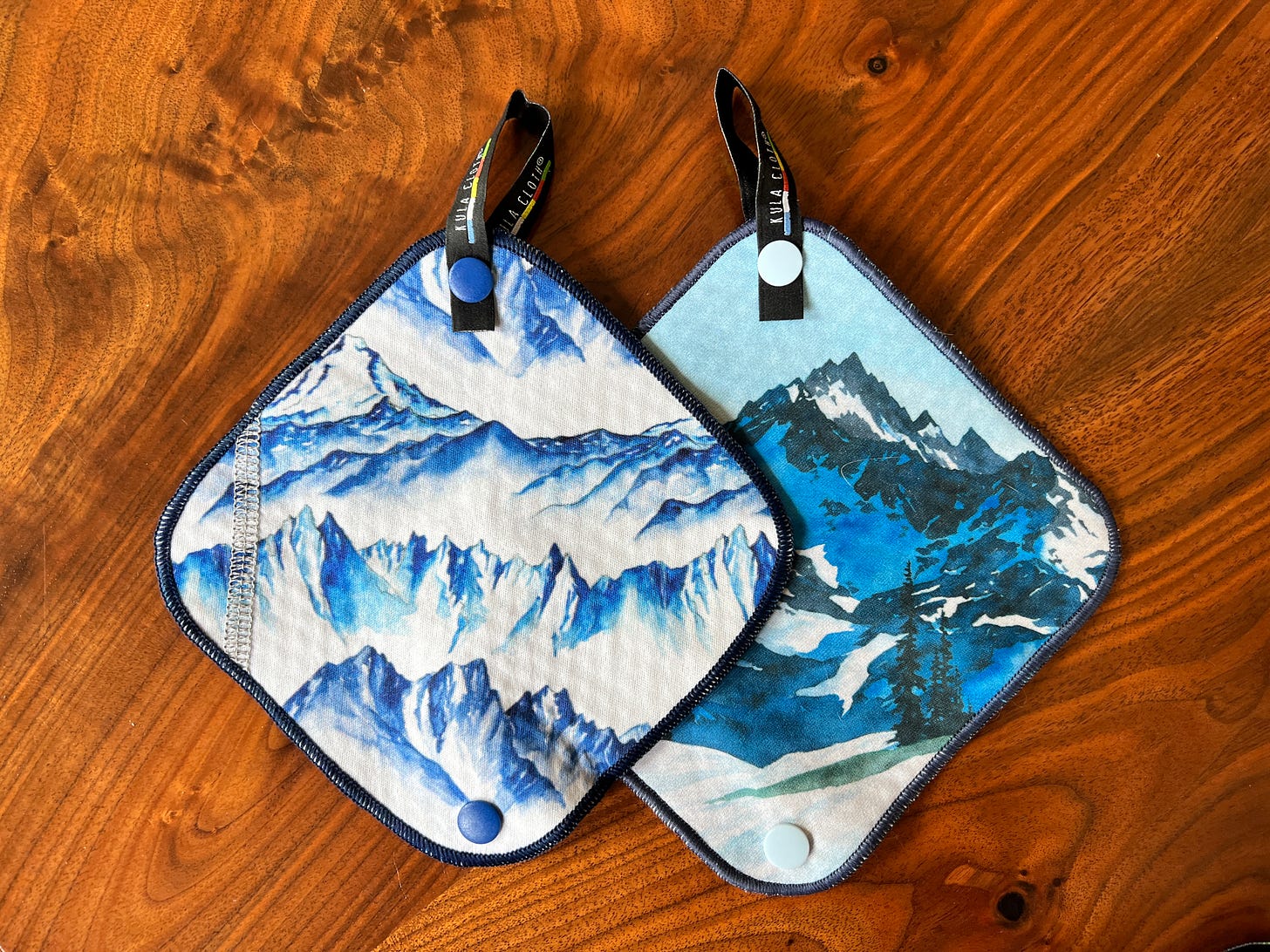
Originally, our ‘stock’ print Kulas were about 1/2 inch smaller (overall) than the Artist Series prints - coming in at a 5.5” square. The Artist Series Kulas were closer to a 6” square. As more and more people were using the Kulas, we received feedback that folks liked having a tiny bit more surface area. When we were designing packaging, we realized that we didn’t want to have to design multiple packaging styles for different ‘sizes’ of Kulas, so I decided to consolidate all designs into the 6” size, since it seemed to be the most popular.
All of our Kulas are always the same size now, but there have been a few exceptions: the MEGA KULA and the MINI KULA!
I don’t have any photos of the MEGA KULA, but we did experiment with an 8” square ‘towel-esque’ Kula, and some people actually loved them. Once we sold out of them, we didn’t bring them back, but I’d definitely consider it if there was ample demand. This Kula was much larger, but some folks liked the added surface area, and also the ability to use it as a towel.
Finally, we designed the MINI KULA in a 3.5” x 3.5” square — honestly, the original idea with the minis was to find a way to use fabric scraps that would otherwise be discarded. We decided to create the minis for fun and give them away as a promotional item, and we were BLOWN AWAY by their popularity. Fun fact: it’s actually JUST AS EXPENSIVE, if not MORE EXPENSIVE, to manufacture a mini Kula as it is to manufacture a normal sized Kula! Obviously, that doesn’t include the cost of fabric, but making the mini Kulas is actually more technical in some way because of the very tight corners on the design. The Mini Kulas have become popular as tree ornaments, key chains… and my mom even uses hers on her suitcase so that she can find it on the baggage carousel! Recently, some ultra trail runners have started using the mini Kulas because they are the perfect size for patting dry and being able to easily carry a tiny Kula during a trail run.
The size of the mini was decided by cutting a large Kula into a smaller square, and then determining the point at which it became unusable — and then scaling up slightly. At only 3”, it’s nearly impossible to sew/attach snaps to a miniature Kula and have any usable space on it. But, at over 4", you might as well just have a normal sized Kula, so we settled on the 3.5” size for the mini Kula. Bonus: they are really cute! We don’t normally sell these on the website, because it would be difficult to sell them for the same price as a ‘normal’ Kula (it’s challenging to try and explain to a consumer that making something so small costs more than making the original item), so we’ve mostly used them as promotional gifts during the holidays. Although… I’m sure I could be convinced that we need to stock them regularly…
Finally, as I was searching for some smaller Kulas to answer this question, I discovered a unique piece of Kula Cloth History and Lore:
This is a VERY VERY early Kula Cloth that was sewed by one of my friends! When I first purchased my fabric, I had a friend who was a tailor, and she wanted to sew the Kulas for me. We had talked at length, and before I knew that it was possible to bond the waterproof fabric and the absorbent fabric together in the factory, my friend had expressed an interest in doing hand bonding of the fabric herself. Then, she was going to transport the fabric to one of her friends, who could sew the product. Then, I was going to have to somehow drive several hours to pick up the finished product. These were all conversations that were happening in the very early days of Kula, before I had found a factory who could help me make them. At the time, it seemed like the only available option, but I had a very strange pit in my stomach about trying to have a production process that was so convoluted and complicated. I remember thinking to myself: How do other outdoor brands do this? Does this make sense? As much as I wanted to involve my friend, I came to the decision that this particular situation wasn’t going to be sustainable long term, and I didn’t want to harm our friendship. It felt like a really difficult decision, and I questioned myself about it for awhile, until I was affirmed that my decision had been solid:
I sent my friend a few yards of the Kula fabric, once I had produced it, and almost immediately she began struggling with the fabric in her sewing machine. The fabric was simply too tough and technical for her machine to handle, and she struggled to get even thread around the edges. She told me that her thread broke continuously and that it was simply one fight after the next with the fabric. As it turns out, she just didn’t have the super industrial machines that were needed for a large scale production of a product with this type of fabric. Secondly, she was unable to handle the unpredictable nature of our reflective thread — which broke constantly in her machine. In these photos, you can see a few of her first attempts at making a Kula, prior to them being produced in a factory.
I’m really proud of the factory that we work with now, and I’m also proud of the entire journey that it took to get there and to forge such a meaningful relationship with the folks that I’ve been working with for nearly 7 years. I’m also deeply grateful to my friends who believed in me in the very beginning of having this idea — who went out of their way to sew for me (note: I did pay my friend for these Kulas!) because they believed in my idea.
This story has a really happy ending: When COVID first started in 2020, and when the toilet paper shortage was underway, I suddenly found myself in a unique position, because I owned a reusable toilet paper company, and I had a lot of Kulas that my friend had made for me …that we had not been able to sell. During the weeks and months of that toilet paper shortage, we fielded hundreds (if not thousands) of requests for donations, and because of my friend, we were able to send a usable (although not aesthetically pleasing) Kula Cloth to every single person that requested one. I’m really proud to have been able to help provide some hope for folks during a very tumultuous and scary time for our planet.
Finally: RE-ENGERGIZING THE TRAIL REGISTER!
Kula Diaries friends, I have slacked on updating the Trail Register, but I want to start it again, and I would love for you to submit your ‘signatures’ to the Register. Each Trail Register entry has a prompt and you can write/create art/make poetry/anything you want … with regards to that prompt. If you’re selected, your piece will be shared here (along with any relevant details to your website or social platforms) + I’ll send you a gift! I’m totally biased, but I think my gifts are pretty great and creative.
Here is our current Trail Register Prompt:
Friends, it felt so good and fun to get back to doing an AMA post. Isn’t it funny how you can revisit something, and it feels new and exciting again? That’s what I’ve loved the most about The Kula Diaries — just going with the flow and seeing where it takes me. I do not take it for granted that I get to show up here and share my words and ideas with all of you, and I’m deeply grateful for your presence.
If you have a question for another AMA post, you can submit that right here:
Until next time, be well, friends — you are loved so much!





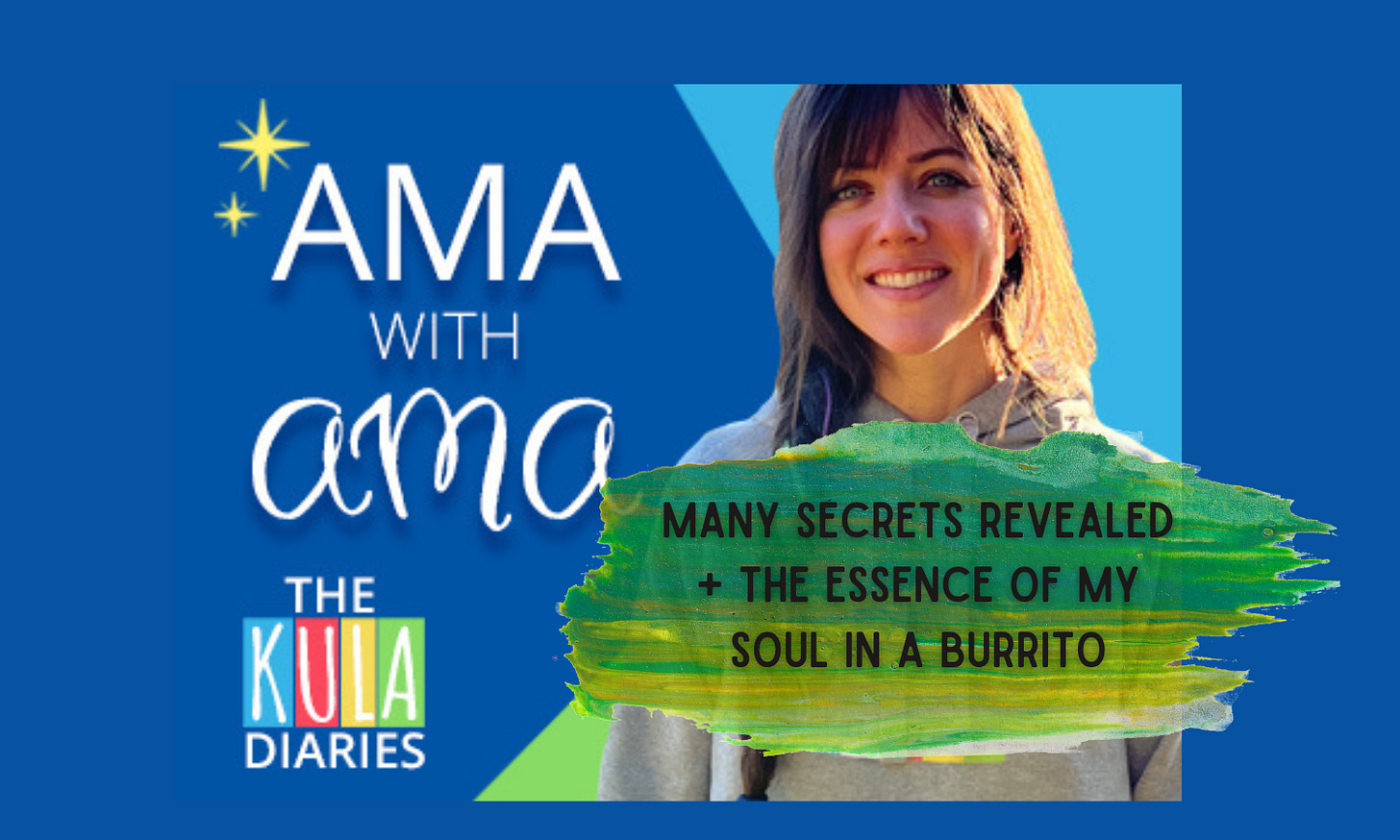
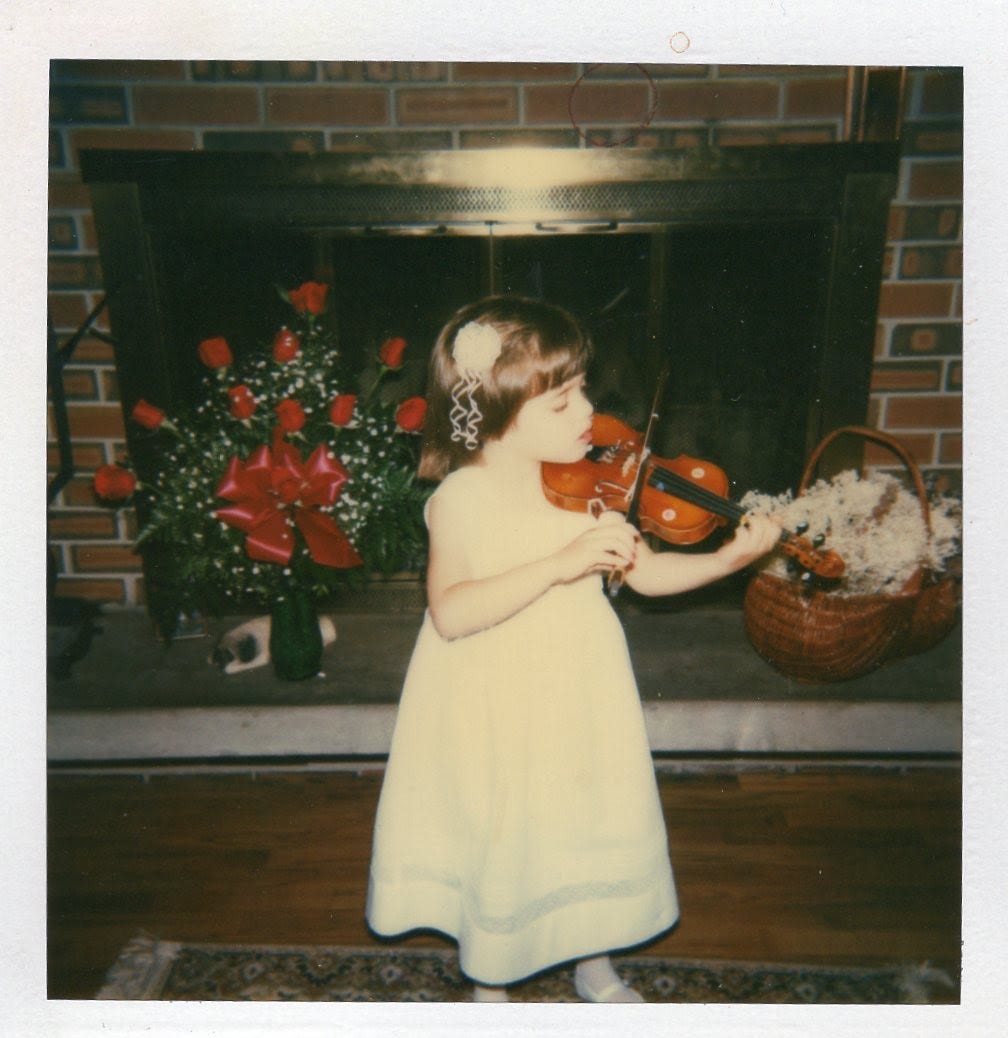
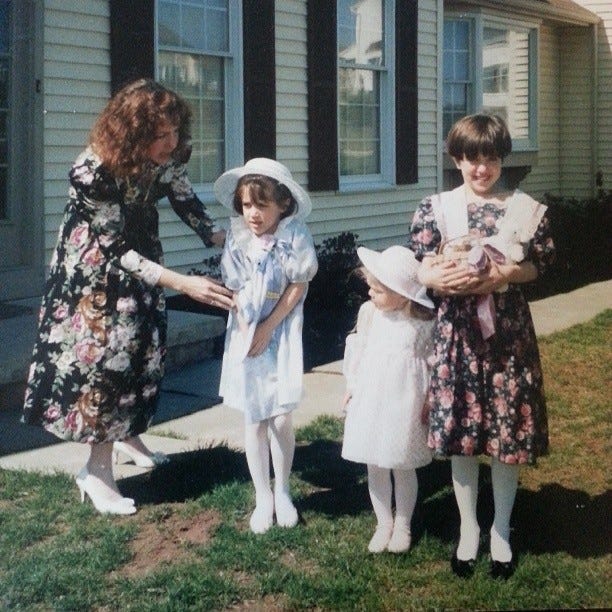


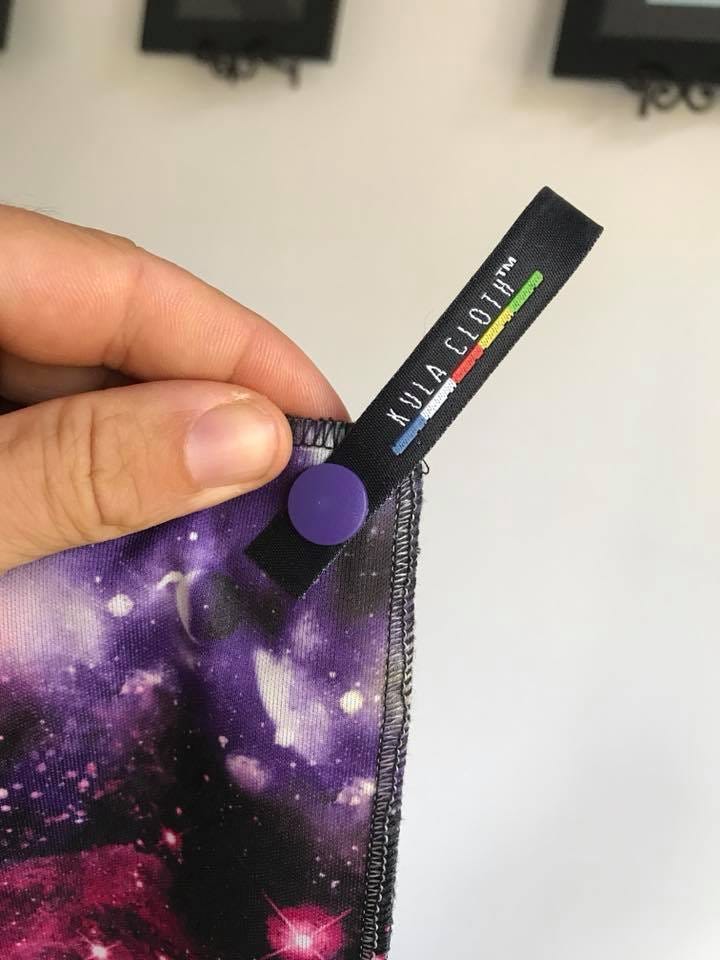




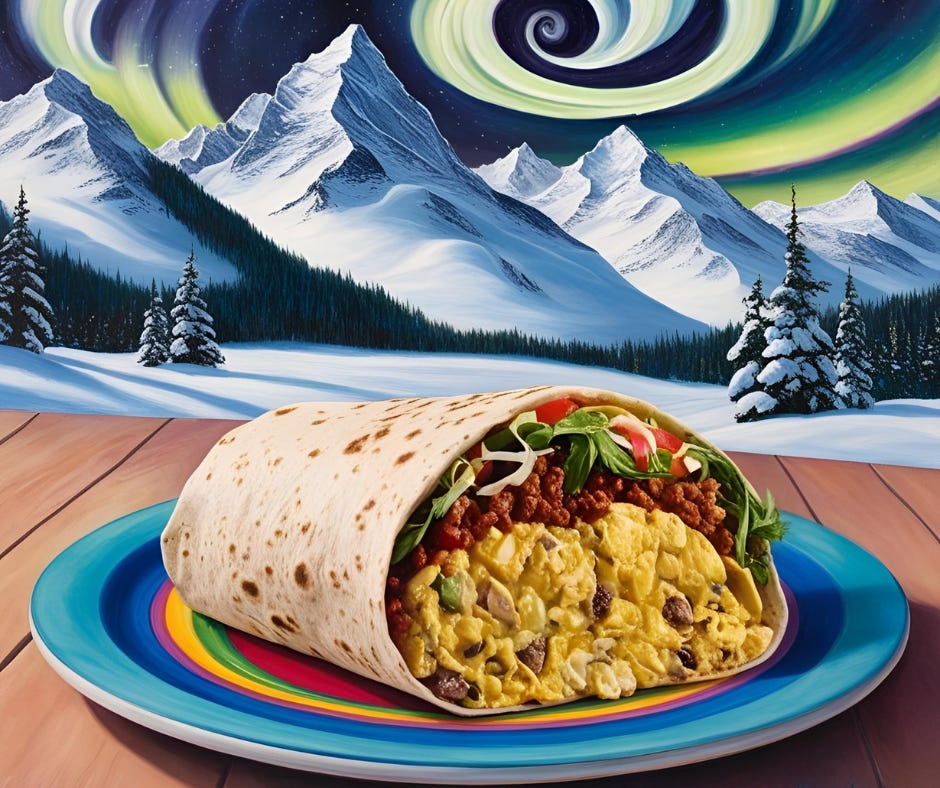

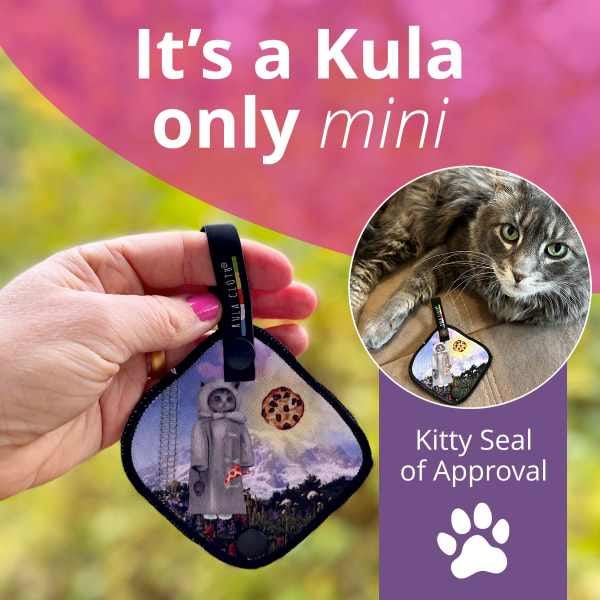

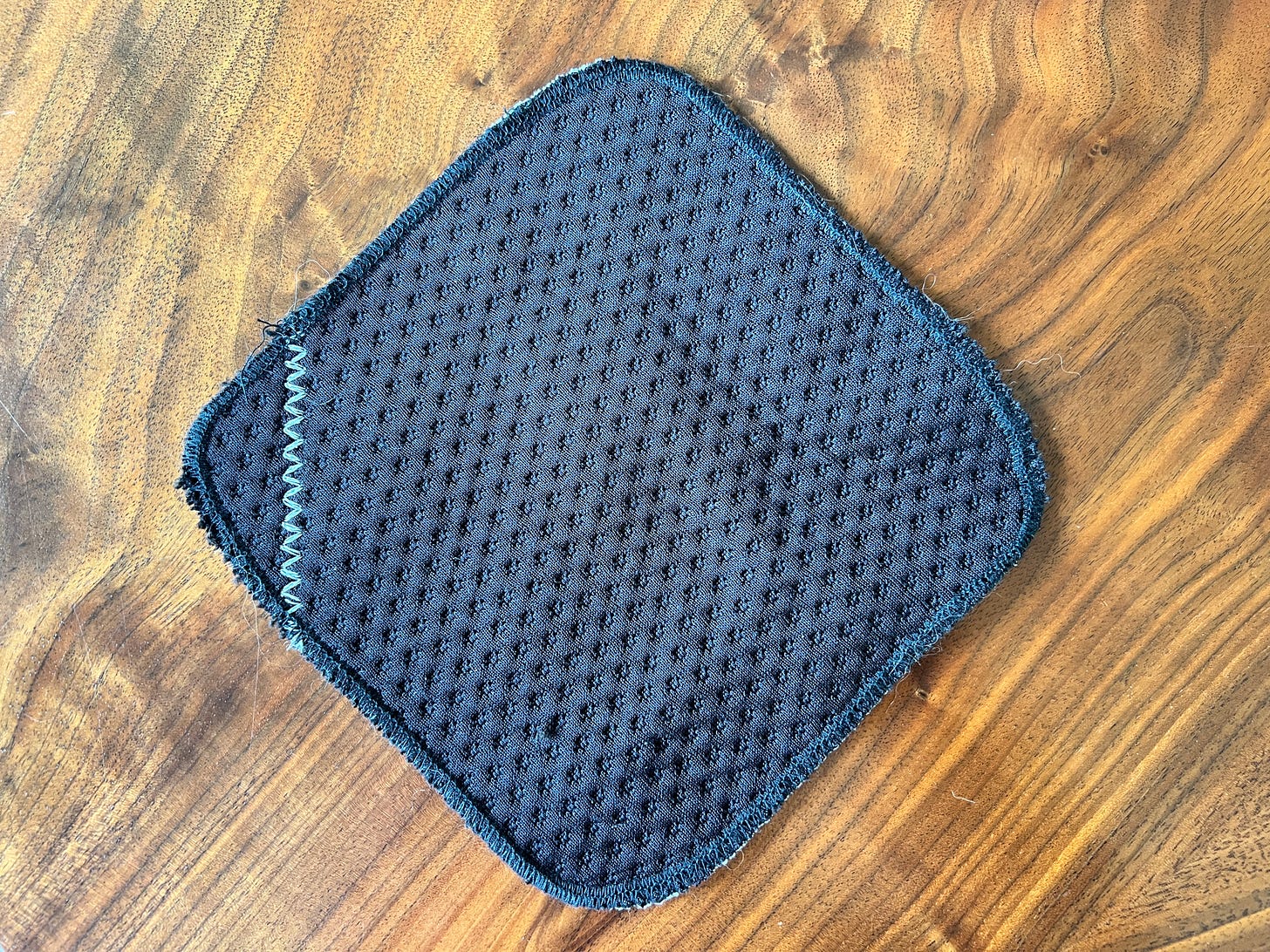


Oh wow Anastasia, I resonate with your experience at Prince of Peace so much, I also used to go there. I love how there are these little coincidences that pop up with people that don’t know each other. Such a small world!
So glad to see AMA is back!!! I had brief moment of fear thinking it was already Wednesday, when you usually published it. Haha ... all good!
Also I loved seeing the logo options... and now you can connect the dots (or rectangles) backwards :)